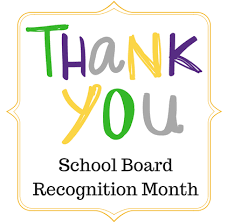February 18 – March 3

Vision
…to inspire a passion for lifelong learning.
Mission
Our mission is to empower all students to be advocates for themselves and others. Each student will be taught essential life-long skills in a secure, respectful environment.


Week of 2/8 Winners:
Miss Partin’s Class, Mr. Wahl’s Class
Mrs. A’s Class, Mrs. Kusulas’s Class
Miss Messina’s Class, Mr. Lafferty’s Class
Mrs. Lacey’s Class
Week of 2/15 Winners
Mrs Latigo’s Class, Ms Robertson’s Class,
Mrs Lacey’s Class, Mr Wahl’s Class,
Mr. Lafferty’s Class and Ms Soranno’s Class
Important: Read by Grade Three Updates from the MDE
What is the Third Grade Reading Law?
WHAT FAMILIES CAN DO TO SUPPORT READING AND WRITING
Reading Book Marks




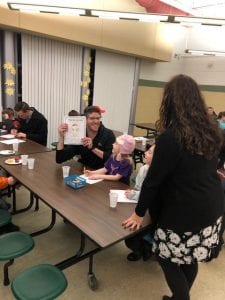
| Your Words Matter |

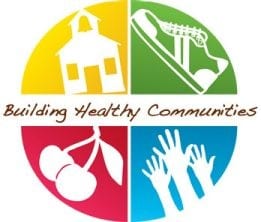
Get Moving!
The recommended amount of physical activity for children is at least 60 minutes per
day. Building Healthy Communities gets kids moving in four ways: (1) through a quality,
physical education curriculum, including new equipment, (2) encouraging students to be
active during recess, (3) offering short physical activity breaks in classrooms, and (4)
having a before– or after-school Healthy Kids Club which offers non-competitive
physical activity in a safe and supervised setting. Encourage your child to be physically
active at home and do LESS sitting around. Encourage them to turn the TV or computer
off to move around more in ways they enjoy. When you do watch TV, think of fun
movements to do during the commercials. Invite your kids to go with you when you walk
the dog or shovel snow. Maybe you can walk to school together instead of driving. You
will be surprised how easy it is to reach that 60-minute goal if you build physically
activity into your day at several different times. However you choose to do it, just get
moving!
March is Reading Month. March is Nutrition Month.
Health and reading go hand-in-hand! The Building Healthy Communities program
combines healthy eating education with reading in many ways. From sending home
healthy home works to reading nutrition labels in class, your child is developing in both
reading and health knowledge. There are also lots of ways to incorporate reading and
nutrition at home! Be on the lookout for the “Healthy Parent Tip Sheets” created by the
USDA and read them with your children. Visit your local library and get a book on the
importance of healthy eating and being physically active or pick out a cookbook and try
making a recipe together!
BINGO for BOOKS Donations
This year once again we will be hosting many activities during March is Reading Month. If you have any gently used books you would like to donate to the cause, we would greatly appreciate it!!! All books can be brought to Mrs. Woods in the media center.


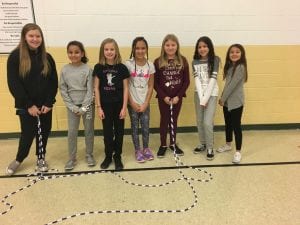
ANOTHER Weather Day!!!!!
On an unexpected day off from school everyone wants to do something different and kids are out of their routine. Kids feel it is a good day to sit at home and just hang out all day. But, with a little direction and a to do list, you can make a productive and memorable day off for them. With a list of exciting and different activities this can make the day more FUN and productive.
Here are some great ideas. Once of these may even turn into a new hobby for your child.
Create a mini garden or plant pots for indoors;
create a photo album or a glitter jar;
build something with legos, blocks, or even build a fort;
create upcoming holiday cards or artwork, (example: Valentines, Mother’s Day cards) or a
special card for someone that needs a “pick me up” (cards for the sick, or a veteran);
create artwork to put in frames and display or as a future gift to someone;
play or create your own board game;
baking together or trying a new recipe;
decluttering, cleaning and reorganizing always makes you feel better!
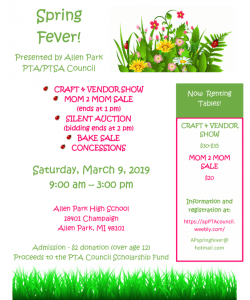
Spring Fever – Table rentals are still available for the Craft & Vendor Show and the Mom 2 Mom sale on March 9, 2019 at APHS. More information and rental contracts are available on our website: https://apptacouncil.
Spring Fever Craft & Vendor Show-Now Renting Tables-25kl4vd



